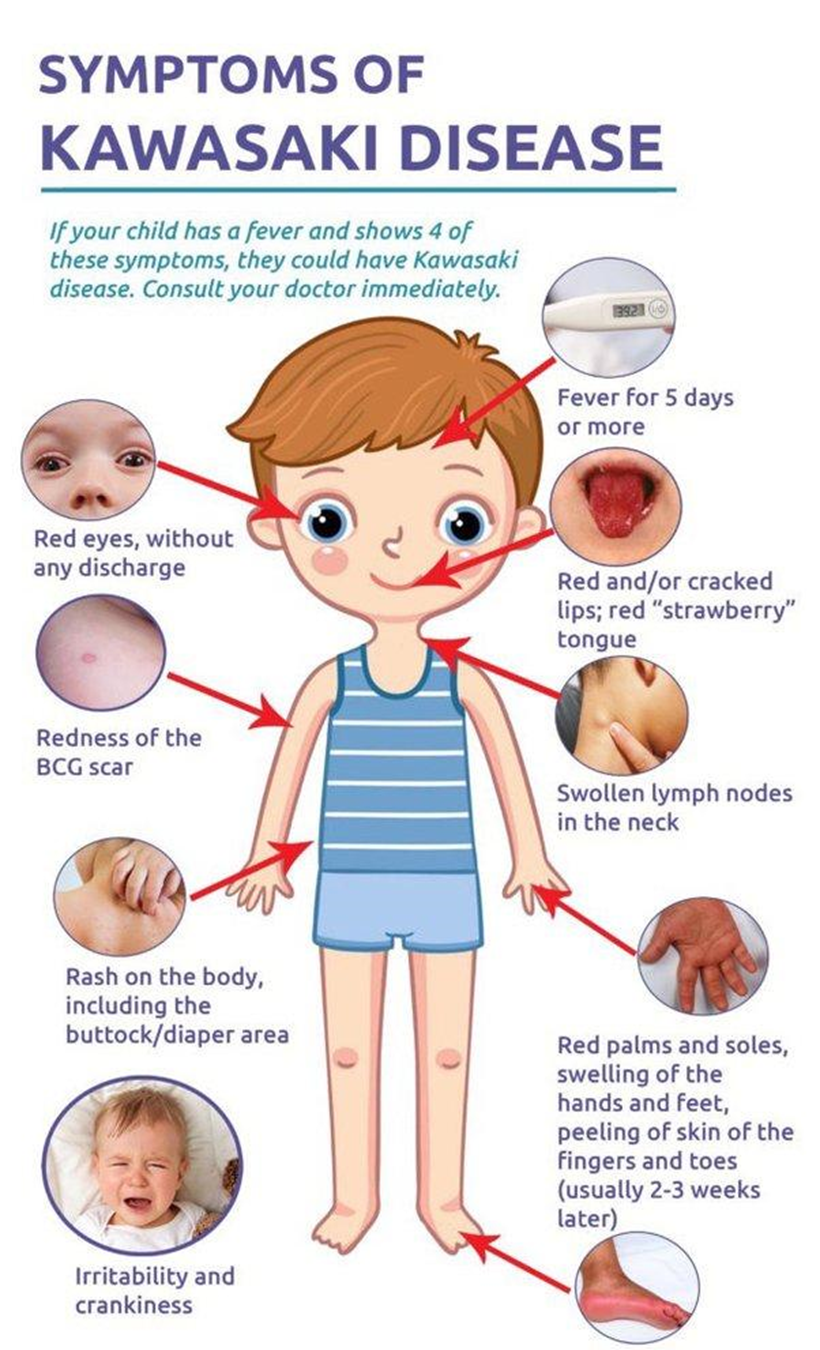On assessment of a child admitted with a diagnosis of acute-stage Kawasaki disease, the nurse expects to note which clinical manifestation of the acute stage of the disease?
Cracked lips
Desquamation of the skin
Normal appearance
Conjunctival hyperemia
The Correct Answer is D
A. Cracked lips:
Incorrect: While red, cracked lips are part of the mucous membrane changes seen in Kawasaki disease, they are not specific to the acute stage. Mucous membrane changes can occur in both the acute and subacute stages.
B. Desquamation of the skin:
Incorrect: Desquamation, or peeling of the skin, is more characteristic of the subacute or convalescent stages of Kawasaki disease, particularly on the fingers and toes.
C. Normal appearance:
Incorrect: In the acute stage, the child with Kawasaki disease typically exhibits signs of illness, including fever and other clinical manifestations. A "normal appearance" would not be expected in the acute stage.
D. Conjunctival hyperemia.
Explanation: Conjunctival hyperemia, or redness of the eyes, is a common clinical manifestation of the acute stage of Kawasaki disease. Other typical signs and symptoms during this stage include fever, mucous membrane changes (such as red, cracked lips), changes in the extremities, rash, and cervical lymphadenopathy.

Nursing Test Bank
Naxlex Comprehensive Predictor Exams
Related Questions
Correct Answer is ["B","D","E"]
Explanation
A. Need for increased caloric intake:
Incorrect: While toddlers may have specific nutritional needs, it is important to focus on a balanced diet rather than emphasizing increased caloric intake. The emphasis should be on providing nutritious and age-appropriate foods.
B. How to encourage cooperative play:
Correct Answer: Encouraging cooperative play is important for a toddler's social development. It involves teaching sharing, taking turns, and interacting with other children.
C. Management of tantrums:
Incorrect: While guidance on managing tantrums can be part of parenting education, it may not be the primary focus in health promotion teaching. The emphasis is typically on positive guidance, effective communication, and setting age-appropriate limits.
D. Dental care:
Correct Answer: Dental care is crucial for toddlers to promote oral health. The nurse should provide information on proper oral hygiene practices, including tooth brushing, and discuss the importance of regular dental check-ups.
E. How to establish trust:
Correct Answer: Establishing trust is a vital aspect of toddler development. The nurse can provide guidance on building a secure and trusting relationship between the child and parents.
Correct Answer is ["B","C","E"]
Explanation
A. Symptoms are continuous throughout the day:
Incorrect: Continuous symptoms throughout the day are more indicative of moderate or severe persistent asthma, not mild persistent asthma.
B. Daytime symptoms occur more than twice a week:
Correct Answer: Children with mild persistent asthma may experience symptoms more than twice a week, but less than once a day.
C. Peak expiratory flow (PEF) is greater than or equal to 80% of the predicted value:In mild persistent asthma, pulmonary function tests (e.g., PEF or FEV1) remain normal or close to normal, with values typically ≥80% of the predicted value, reflecting good lung function between episodes.
D. Nighttime symptoms occur approximately twice a month:
Mild persistent asthma often involves nighttime symptoms or awakenings occurring 3–4 times per month. If nighttime symptoms occur more frequently (e.g., once weekly), it suggests moderate persistent asthma.
E. Minor limitations occur with normal activity:Children with mild persistent asthma may experience minor limitations in their normal activities. These limitations are not severe and do not significantly impact daily life.
Whether you are a student looking to ace your exams or a practicing nurse seeking to enhance your expertise , our nursing education contents will empower you with the confidence and competence to make a difference in the lives of patients and become a respected leader in the healthcare field.
Visit Naxlex, invest in your future and unlock endless possibilities with our unparalleled nursing education contents today
Report Wrong Answer on the Current Question
Do you disagree with the answer? If yes, what is your expected answer? Explain.
Kindly be descriptive with the issue you are facing.
